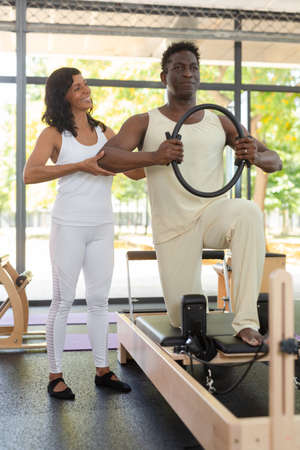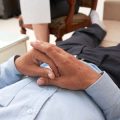Understanding Heart Attack Recovery
Recovering from a heart attack is a journey that involves both your body and mind. It’s normal to feel overwhelmed, but knowing what to expect can help you take control of your recovery. This section will guide you through the key physical and emotional challenges, explain why making changes to your lifestyle really matters, and show you how to set goals that work for you.
What Happens During Heart Attack Recovery?
After a heart attack, your heart needs time to heal. You might spend several days in the hospital where doctors monitor your condition and start you on medications. Once home, recovery continues with regular check-ups, new routines, and support from family and friends.
Common Challenges After a Heart Attack
| Physical Challenges | Emotional Challenges |
|---|---|
| Fatigue or tiredness | Anxiety about another heart attack |
| Shortness of breath | Depression or sadness |
| Pain or discomfort in the chest area | Feeling overwhelmed by lifestyle changes |
| Difficulty returning to daily activities | Lack of confidence in physical abilities |
Why Do Lifestyle Changes Matter?
Your doctor will likely recommend changing your nutrition, adding safe exercise, and finding ways to manage stress. These changes are important because they help lower the risk of having another heart attack and improve your overall quality of life. In the U.S., guidelines from the American Heart Association highlight the importance of healthy eating, staying active, and reducing stress as part of standard care after a heart event.
Key Reasons for Lifestyle Changes:
- Reduce future risk: Healthy habits lower cholesterol, blood pressure, and blood sugar.
- Improve recovery speed: Good nutrition and exercise support healing.
- Mental well-being: Managing stress helps prevent depression and anxiety.
- Better daily living: You’ll have more energy and confidence in everyday activities.
Setting Realistic Recovery Goals
The best way to move forward is by setting small, realistic goals. Start with simple steps—like walking for 5-10 minutes each day or swapping out soda for water. As you gain confidence, you can build on these successes. Remember, everyone’s recovery timeline is different. Celebrate progress, no matter how small it seems.
Example: Goal-Setting Table
| Goal Area | First Step Example | How to Measure Progress |
|---|---|---|
| Nutrition | Add one serving of vegetables at dinner each day | # of days per week with extra veggies at dinner |
| Exercise | Walk for 10 minutes after lunch each weekday | # of walks completed per week |
| Stress Management | Breathe deeply for 5 minutes before bed each night | # of nights using deep breathing exercises |
The road to recovery after a heart attack may seem long, but with the right knowledge and support, positive change is possible—one step at a time.
2. Nutrition for a Healthy Heart
After a heart attack, making smart choices about what you eat is one of the most important ways to support your recovery and reduce your risk of future heart problems. Let’s break down what you can do to create a heart-healthy diet that fits into everyday American life.
Choose Heart-Healthy Foods
Focusing on foods that are good for your heart can make a big difference. Here are some simple swaps you can try:
| Instead of… | Try… |
|---|---|
| White bread or regular pasta | Whole grain bread or whole wheat pasta |
| Potato chips or cookies | Fresh fruit, veggies, or unsalted nuts |
| Fried chicken or burgers | Grilled chicken breast or baked fish |
| Creamy dressings or sauces | Olive oil & vinegar or salsa |
Limit Sodium (Salt)
Too much salt can raise your blood pressure and put extra strain on your heart. The American Heart Association recommends aiming for less than 2,300 mg of sodium per day, and moving toward an ideal limit of 1,500 mg for most adults. To cut back on salt:
- Cook more meals at home using fresh ingredients.
- Use herbs, spices, lemon juice, or vinegar to flavor food instead of salt.
- Avoid canned soups, processed meats (like deli turkey or bacon), and salty snacks.
Read Nutrition Labels
Food packaging in the U.S. has nutrition labels to help you understand what youre eating. When shopping:
- Check serving sizes — sometimes a package contains more than one serving.
- Look for foods labeled “low sodium” or “no salt added.”
- Aim for items with less saturated fat and more fiber.
- The ingredient list tells you what’s really inside — if salt, sugar, or unhealthy fats are listed near the top, it might not be the best choice.
Mediterranean Diet: A Popular Heart-Healthy Choice
The Mediterranean diet is often recommended by doctors in the U.S. because it’s been shown to protect heart health. Here’s what this diet focuses on:
| Mediterranean Diet Basics |
|---|
| Lots of fruits and vegetables every day |
| Whole grains like oats, brown rice, and barley |
| Healthy fats from olive oil, nuts, and seeds |
| Fish and seafood at least twice a week |
| Poultry, eggs, cheese, and yogurt in moderation |
| Red meat only occasionally |
| Sweets and sugary drinks rarely |
Quick Tips for Eating Out in America:
- Ask for sauces and dressings on the side.
- Choose grilled over fried options.
- Order extra veggies instead of fries.
- If portions are large (as they often are!), box up half your meal to take home.
![]()
3. Incorporating Safe and Effective Exercise
Guidelines for Returning to Physical Activity After a Heart Attack
Starting to move again after a heart attack can be intimidating, but exercise is essential for recovery and long-term heart health. In the United States, doctors often recommend a gradual return to physical activity. Always check with your healthcare provider before starting any new exercise program. Most people can begin with light activities, such as walking or gentle stretching, within a few days to weeks after leaving the hospital.
Safe Types of Exercises
| Type of Exercise | Description | Tips for Americans |
|---|---|---|
| Walking | Low-impact and easy to start almost anywhere | Try walking in your neighborhood, at a local park, or inside malls during bad weather |
| Cycling (stationary) | Good for building endurance without stressing joints | Most gyms offer stationary bikes; home models are affordable and widely available |
| Swimming/Water Aerobics | Gentle on joints while providing a full-body workout | Many community centers and YMCAs have pools and beginner classes |
| Yoga/Tai Chi | Focuses on flexibility, balance, and relaxation | Look for beginner classes at local studios or online videos tailored for cardiac health |
The Role of Cardiac Rehabilitation Programs in the US
Cardiac rehab programs are widely recommended in the US after a heart attack. These medically supervised programs combine exercise training, education about heart-healthy living, and counseling to reduce stress. Sessions typically take place at hospitals or specialized clinics several times per week. Medicare and most insurance plans cover cardiac rehab if your doctor refers you.
What to Expect in Cardiac Rehab:
- A personalized exercise plan based on your condition and abilities
- Education on nutrition, medication management, and lifestyle changes
- Counseling and support groups to help manage stress and emotions after a heart attack
- Regular monitoring by nurses and exercise specialists during workouts for safety
Building an Exercise Routine That Fits American Lifestyles
The key to long-term success is finding activities that fit into your daily routine. Here are some tips:
- Start Small: Even 10-minute sessions add up—try parking farther from store entrances or taking short walks during work breaks.
- Use Technology: Track your steps with fitness trackers or smartphone apps popular in the US like Fitbit or Apple Health.
- Make It Social: Join local walking clubs or invite family members for evening strolls; many Americans find support groups through community centers or online forums.
- Create a Schedule: Treat exercise like any other appointment—add it to your calendar for accountability.
- Mix It Up: Vary activities to keep things interesting and prevent burnout—alternate between walking, cycling, and light strength exercises.
- Listen to Your Body: Stop exercising if you feel chest pain, dizziness, or extreme shortness of breath—contact your doctor right away if these occur.
Merging these safe and effective exercise habits into your lifestyle will support your heart health journey after a heart attack—and help you get back to enjoying life in your own unique American way.
4. Managing Stress and Mental Health
Understanding the Role of Stress in Heart Disease
After a heart attack, managing stress is just as important as following a healthy diet or exercising regularly. Stress can raise your blood pressure, make your heart work harder, and may even trigger another heart event. Learning to recognize stress and taking steps to manage it can help protect your heart for the long run.
Ways to Manage Stress After a Heart Attack
Counseling and Professional Support
Talking to a mental health professional such as a counselor, psychologist, or social worker can help you process your feelings after a heart attack. Many Americans find support through therapy, either in person or via telehealth services. Your doctor can refer you to professionals experienced in cardiac care.
Mindfulness Practices
Practicing mindfulness can help lower stress levels and improve your overall well-being. Techniques such as meditation, deep breathing exercises, and yoga are widely practiced in the United States. Many community centers, hospitals, and online platforms offer classes or guided sessions.
Community Support Groups
Connecting with others who have experienced similar health challenges can be very helpful. In the U.S., organizations like the American Heart Association (AHA) and Mended Hearts provide support groups for heart attack survivors and their families. These groups meet in person or online and offer emotional support, tips for recovery, and encouragement.
Popular Stress Management Resources in the U.S.
| Resource Type | Description | How to Access |
|---|---|---|
| Counseling/Therapy | One-on-one sessions with licensed professionals to talk through emotions and challenges. | Ask your doctor for a referral or search local providers online. |
| Mindfulness Classes | Guided meditation, yoga, or breathing exercises led by trained instructors. | Check local gyms, wellness centers, or online platforms like Calm or Headspace. |
| Support Groups | Meetings with other heart attack survivors for shared experiences and encouragement. | Visit AHA.org or MendedHearts.org to find nearby groups or virtual meetings. |
| Hotlines & Helplines | Immediate phone support during stressful moments. | The National Suicide Prevention Lifeline: 988 (available 24/7) |
Tips for Reducing Everyday Stress
- Create a daily routine that includes time for relaxation and hobbies you enjoy.
- Aim for at least 7-8 hours of sleep each night to help your mind recover.
- Stay connected with family and friends – social support is key to recovery.
- If you feel overwhelmed, dont hesitate to ask for help from professionals or loved ones.
If you’re not sure where to start, talk with your healthcare team about resources available in your community. Taking care of your mental health is a vital part of recovering from a heart attack and staying healthy moving forward.
5. Building Support and Sustaining Change
Stay Motivated with Your Support Network
Recovering from a heart attack and making essential lifestyle changes can feel overwhelming, but you don’t have to do it alone. Having a strong support system can make all the difference in staying motivated and keeping your heart healthy.
Involve Family and Friends
Your loved ones can be your best cheerleaders. Invite them to join you in healthy activities, like walking after dinner or cooking heart-friendly meals together. Let them know how they can help—maybe by reminding you about medication or joining you at doctor’s appointments.
Utilize American Healthcare Resources
The U.S. offers many resources for heart health support:
| Resource | How It Helps | How to Access |
|---|---|---|
| Cardiac Rehab Programs | Guided exercise and education for heart health | Ask your cardiologist or primary care provider for a referral |
| Registered Dietitians (RD) | Personalized nutrition advice and meal planning | Check with your insurance or local hospital |
| Mental Health Counselors | Support for stress management and emotional well-being | Find through your healthcare provider or Employee Assistance Program (EAP) |
| Community Health Centers | Affordable healthcare services and group programs | Search online for centers near you at HRSA.gov |
Use Technology to Track Progress
Smartphones and wearable devices can help you stay on track with your goals. Popular apps like MyFitnessPal, Apple Health, or Fitbit let you log meals, track physical activity, monitor heart rate, and even set reminders to take your medication. Many people find that seeing their progress helps them stay motivated day-to-day.
Join Local Support Organizations for Heart Health
You’re not alone on this journey. Local organizations such as the American Heart Association (AHA) offer support groups, educational workshops, and community events focused on heart health. Connecting with others who are facing similar challenges can give you encouragement, share new ideas, and help keep you accountable.
Quick Ways to Build Your Heart-Healthy Support Team:
- Invite family to walk or exercise with you regularly.
- Share your meal plan with friends so they can support your choices when eating out.
- Join an online forum or Facebook group for cardiac rehab graduates.
- Sign up for local heart health seminars or cooking classes together.
- Tell your doctor about any challenges—your care team is there to help!
Sustaining these changes is much easier when you build a team around you, use available resources, and celebrate small wins along the way. Every step forward is a victory for your heart.


